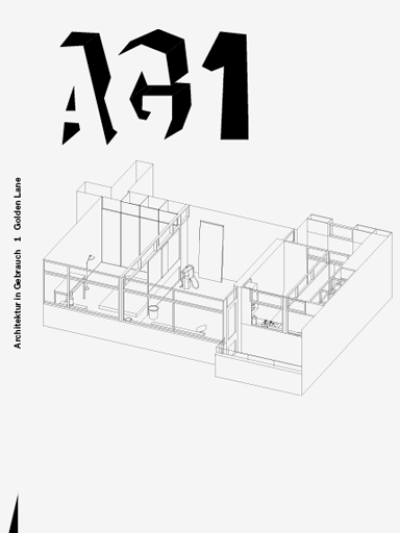
AG1 – Great Arthur House, AG2 – Falkenhorst, AG3 – Mancunian Way, AG4 – Tiergarten
AG (Architektur in Gebrauch) is a journal for architecture in use. Each number of this series documents one building or one built structure in their current state, considering their transformation while looking back at the moment when they were built. The term “use” (Gebrauch) constitutes in this case the driving force behind the development of every built structure.
AG is a journal for the practice of architecture. Instead of another contribution to a history of architecture, repeating itself as an endless series of new buildings in which the photographs of the time of realization become the only instance of authenticity and influential moment, AG follows the opposite way observing, from the point of view of the now, history as a simultaneous present. The focus on the present, which is also the focus on the value of use in architecture, intends to seize the production of living conditions as the main discourse on built environment.
AG will show the examples of the “Falkenhorst”, where the lack of planning and design became the prerequisite for communal existence, and “Tiergarten”, the city’s oldest park transforming into a model of simultaneity that contains Berlin in her entirety.
Architektur in Gebrauch (AG) ist eine Zeitschrift zu Architektur in Gebrauch. Die Hefte der Reihe dokumentieren jeweils ein Gebäude oder bauliche Struktur in ihrer gegenwärtigen Erscheinung und betrachten im Rückblick seine Entstehung und Veränderung. Der “Gebrauch” steht hierbei allgemein für das antreibende Moment baulicher Entwicklungen.
AG ist eine Zeitschrift für die architektonische Praxis. Anstelle eines Beitrags zur Ideengeschichte der Architektur, die als eine Geschichte von Neubauten in endloser Wiederholung die “authentische” Fotografie des soeben fertiggestellten Gebäudes zum alleinigen Referenzpunkt seiner Wirkungsgeschichte macht, geht AG den umgekehrten Weg und betrachtet aus der Gegenwart die Geschichte als simultane Gegenwart. Der Fokus auf die Gegenwart, bzw. den Gebrauch und Gebrauchswert von Architektur will komplementär auch ihre Produktionsbedingungen in den Vordergrund eines Diskurses über die gebaute Umwelt stellen.
Beispielhaft vorgestellt werden sollen das Heft “Falkenhorst”, das von der Abwesenheit von Gestaltung als Vorraussetzung von Gemeinschaft (und ihres Verschwindens) erzählt, und “Tiergarten”, das den Berliner Park als ein Modell der Simultanität begreift, in dem Berlin vollständig enthalten ist.
http://wp.buerofuerkonstruktivismus.de/?p=96
jeweils EUR 10.00 (each)






















































